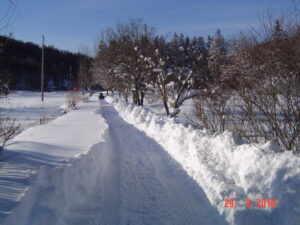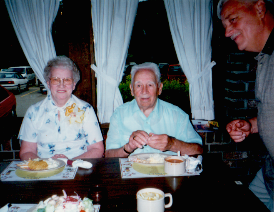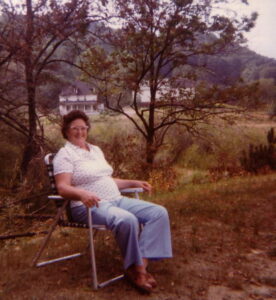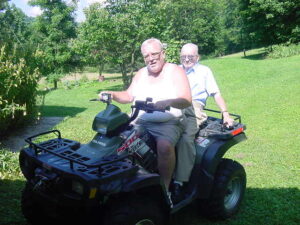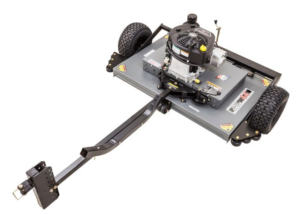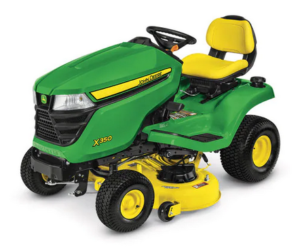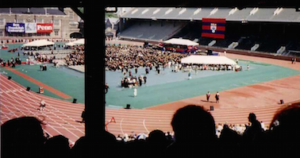by
Larry Pearce
4/22/22
Chapter 3D, Section iv – Back on Our Own (2002 – 2012)
Family tradition has it that my Great-grandparents Charles and Permelia Nelson Pearce died four days apart in early May, 1914, the start of World War I, of Pneumonia. One variation says that she died after going to the graveside service of her husband in the rain. Death certificates in those days weren’t always reliable: Charles’ had the wrong name for his mother and Permelia’s had no name at all in that space, so it’s probable that the causes of death were also askew. Charles’ document lists “Apoplexy” as the primary cause of death. Today, we would say “Stroke.” He was 80. His wife apparently had “Influenza” at the time of the funeral with “Pneumonia” as a contributing factor of death. She was only 75. Remember that this was years before even the common flu vaccine was available, not to mention modern cardiopulmonary treatments. What does this have to do with me, their great-great grandson and the Pearce household of over a century later? I report all this to compare the death of my father, Ralph, who died of pneumonia just shy of his 85th birthday in 2002. Dad’s grandparents had raised 10 kids on the farm and mill in what is now North Park, Pittsburgh. Charles was on the school board, active in church, and administered his milling business. Born on that homestead, my dad was also active, not retiring until age 67, an Elder in the church, serving on their cemetery committee, and with Mom, raising four children. Amazingly, he had only been in the hospital once in his life: at age 65, to have his gall bladder removed. He even drove himself to the hospital the week he died, after a doctor’s appointment for what he thought was a bad cold. Susan and I visited him there on a Saturday. Though he looked chipper to me, she told me later that he had said that he thought “something was wrong.” The doctors treated him for a certain kind of pneumonia, but on Monday, after being anesthetized for a lung examination, he was put on life support and never woke up. Apparently, he was given less than the an antibiotic necessary to sustain him. He was pronounced dead at 2:02 am the following Saturday, February 2nd. Imagine the lack of progress in treating lung and related ailments nearly a century since his grandparents had passed. Such a shock Dad’s death brought to our home, one that he had worked so hard to help us build, not only physically but also as a fine moral example. I’m sure my brothers and sister would agree with me and have their own stories of Dad’s help and generosity.
Those were difficult times after Dad’s death, especially considering my older brother Carl “Butch” died of cardiopulmonary distress just 2 1/2 years later, a few days after we visited him in the hospital. These two had been such a help in building our house in Forwardstown and supplying it with firewood over the years. Family picnics and reunions, holiday gatherings and dinners out, would never be the same. Now, try to imagine another loved one gone just a year after that, in 2005. Mother Ruth was the center of our universe and provider of all things good. She had accompanied Dad on every two-hour trip to Jerome and Forwardstown for nearly 35 years. My sister had lived with our parents in Moon Township since they became more dependent, and we got a call from her at the hospital one Sunday after Mom fainted in the bathroom while getting ready for church. She had broken her ankle, and after being treated accordingly, was undergoing therapy. She was expected to be “back on her feet” within six weeks. We made arrangements to have her moved to a nursing home on a Tuesday for full recovery. She fell into a coma there, was moved back to the hospital, and never woke up. She was diagnosed with Cancer on Friday, moved to a hospice facility nearby, and died on a Monday. Her entire family was fortunate to have visited there the weekend before. Somehow, everyday things in Forwardstown didn’t seem as important when we returned from this third funeral in just a few years.
After the death of Susan’s mother Hilda in 1997, we looked after her Dad, Richard. The “RO” Miller homestead was just three miles south of our place. He too had made all the difference as we literally built our lives around our kids and home in northern Jenner Township. We helped sort what was left of his personal and contracting belongings and moved him to a small apartment on his property and sold the brick home he had built for his family 65 years earlier. Shortly after that, he survived a heart attack and underwent months of rehab. Eventually, we moved him to two different care facilities before a final placement in a nursing home where he died in 2015 at the ripe old age of 94. Now, Susan and I were indeed on our own in this world with the passing of our last parent. Our kids, Annie and Matthew, had long since grown into adulthood and departed into their professions, and Susan’s older brother Dan died just before the Pandemic after a prolonged illness.
As the title of this installment suggests, Susan and I were indeed “Back on our Own.” Fortunately for our Faith, Family (though distant), and Friends (who unfortunately could never fill our emptiness), we made it to the retirement years in the middle 2000-teens. We had had our professions: Susan teaching music privately and at Bishop McCort and me advising financial clients and teaching at Mt. Aloysius, as I explained in the last section. We’ll have more in forthcoming installments on this as well as our missions and ministries: playing and singing for churches and community activities.
Most of the work cutting the lawn and fields, cultivating the yard and garden, and of course removing the snow from driveway and walkways had been done by shovel and scythe before the final decade of this discussion. After the blizzard of 1993, termed “The Storm of the Century,” I grew tired of depending on, waiting for, and paying generously, neighbors to “plow me out.” So I purchased a used-but-dependable, American-made Polaris 500 All Terrain Vehicle (ATV) with 48-inch plow and this usually did the trick.
But, after an even deeper snow, pictured atop this article, 48 inches by my measurement, in the winter of 2010, I learned that a powerful, two-stage snow blower was also available for my walk-behind, a small BCS American-made tractor with 48-inch sickle bar and 24-inch rotary mower. I rushed over the mountain to Ligonier, where the attachment was on display, with cash in hand. That late winter storm came after I had very little room left to push the snow with my plow. Access down the long driveway to the house called for something that would lift the white stuff and literally throw it our over the mounds. My walk-behind with blower did the trick. It was so effective, in fact, that the following spring I found gravel 25 feet from the driveway, fortunately not much of it.
As I said, In 2008 I had bought a slightly-used Polaris ATV. While Susan and I hadn’t done much joy riding on it, she left it up to me to cut our six acres of pasture. I purchased a new Swisher pull-behind rotary field mower at the local Tractor Supply to level the weeds and brush several times each summer. My dad had received a small, metal cart as a retirement gift from his employer, Calgon, a few years earlier. His acre of yard in Moon Towsnhip only required a wheelbarrow, so he gave it to me. I towed it behind the Polaris, usually filled with grass, sticks, gravel, or manure. Speaking of which, it even has a “dump” feature on it.
Over the years, on our various properties I had graduated from a reel-type, no motor, push mower, to a reel-type motorized push mower, to a rotary push mower. After realizing I would have an acre of grass to cut in Forwardstown, I bought a Lawn-boy two-stroke rotary mower with motorized back wheels. After a few years in the wet grass, the drives were no longer effective and I unhooked them. When the Lawn-boy wore out, I picked up a simple, but dependable, four-stroke Murray mower at Walmart for a fraction of the price I had paid for the big name brand. Around the time of my hip replacement in 2018, I realized that this pushing a mower for four hours wasn’t going to work. I think I was the last of my neighbors and friends to buy and use a riding tractor, but by golly, I did. And I bought what I thought was the biggest, most powerful and practical mower for my situation: a brand new American-made John Deere X350. I even hauled it home on the back of our pick-up and changed the oil when it was called for. I keep it in our garage, the deck cleaned regularly and the body polished to a T.
The only simple “machine” still in use here is an old rototiller that Susan bought for me for one of our first Christmases. Neighbor Tom used to plow our garden before he passed, and I broke-up the clods with this generic go-getter. She had stripped and painted it after she bought it, so it would be presentable as a gift and a garden tool. Oh, and did I mention my three chainsaws: a two-cycle Homelite 16-inch, an electric Oregon 14-inch, and a small SunJoe on a pole for reaching limbs. Add those to my hedge trimmer and, of course, various weedeaters, some of which I use to trim our local cemetery each summer, and you have a garage full. I’ll finish this paragraph with a thankful heart for all the handtools I’ve either bought or been given, from grandfathers, to fathers or in-laws, to a gracious wife or kids over the years. Now, who gets them when I move?
One of the most fun and practical tools I bought used, and probably reconstructed, from a newspaper ad a few years ago is my log splitter. While it has never refused to do what I ask, it has presented a few problems: First, to get the really big sycamore logs up on the platform for splitting, I have to use other, smaller logs and build a ramp and roll or slide the heavyweights up. I think some of the back and knee problems I’ve had after my hip surgery have come from this stupid activity. Second, though the shiny silver Honda gasoline engine was undoubtedly brand new when I bought the machine, the large hydraulic fluid reservoir was old and sprang a leak the second year. My local tool man Chance had it welded shut in one visit. I chose the word “fun” to describe this tool because in the early day of trying cheaper alternatives to heat our all-electric house I used to haul logs to the back yard, backing into the side bank of course, and set them end-wise on a large stump before holding a heavy steel wedge on their end with one hand to “set it,” and drop my eight-pound sledge down with the other. There was seldom a day when I didn’t present Susan with a shin bruise or wedge fragment lodged in my hand. The warmth those sources of nature brought me and my family made it all worth it. Besides, I usually had a football game on the back porch radio as I worked: We are Penn State, Go Pitt, or Hail Indiana.
One of the pure delights in recent years has been the knowledge that I can operate a powerful “digger.” What’s a digger, you ask? Well, with all the technical terms out there for the various types of construction equipment, Susan and I just call the Bobcats at the local rental place, diggers. They are diesel-powered and are delivered to our property on the back of a truck or trailer, with tracks, as opposed to tires because of the swampy land. I learned early on that by paying for a Saturday I get Sunday thrown in free or for a discount, although this means I have to miss church. Some folks add the word “ditch” to digger, and I have been known to dig ditches. But, mostly I need to clean the sandy, rocky sediment from above and below my bridge. Knowing how to get near the water without ending up in the water has taken some practice. I try to scoop above the water line on the creek to avoid hearing from the State. I’m allowed to clean 50-feet on either side of the bridge, which I do every couple of years. After the digger is returned, I get under the bridge with a shovel and large plastic pan to clean the remainder of the sediment. When the pan is full, I pull it out from under the bridge with the winch on my ATV. Yes, sometimes (actually all the time) I get wet from my feet to my neck and very dirty.
In the year after Mom died, and I was closing her estate, 2006, a notice ran in the newspaper about the reconstruction and paving of the old Somerset Pike that runs from Johnstown to Somerset past our house. An announcement was made during the public meeting that the Pennsylvania Department of Transportation (PennDot) intended to cut down all, or most, of the 100-year old giant sycamore trees that had been planted in the 1920s in honor of our World War I veterans. Back then the paved roads were much narrower, and the vehicles went much slower, so the trees posed few problems. We were told that studies had indicated that these trees were responsible for deaths after drivers ran into them. My first desire was to see those studies, but they were never produced, and I thought, “Well, careless drivers could be killed by running into most anything.” I was not the only one who wanted to save these beautiful memorials. I had many people sign my petition to save the trees, from my house to Jennerstown. The newspapers and TV stations got a hold of the story and soon many readers and viewers were aware of the situation. I personally met with PennDot officials, and the neighbors and I held our own public meetings. While some wanted to save all of the trees, I was willing to let go of about half in the interest of public safety, as long as the wood was used. I had the tree cutters dump the giant logs on my land out along the road. A few neighbors came to claim some of the smaller logs. I was left with logs so large that I had to buy a bigger chainsaw. Sycamore trees, after they’re cut into smaller pieces, take from three to five years to dry and cure. Even then, splitting is very difficult because of the curvature in some limbs. Nevertheless. I was able to burn much of these memorable logs, and I think of the sacrifice of both our veterans and the volunteers who planted these tree. I still have sycamore logs stacked and covered, waiting to heat our home in the future. A few of the biggest, uncut and unsplit logs still give evidence of our movement, rotting along the road in the front field after 16 years. I roll them over occasionally, allowing them to go back peacefully into the soil.
Losing parents and siblings to death as we mentioned in the beginning of this piece, is very sad and permanent, but saying “Goodbye” to kids after they graduate from post-secondary institutions and move away is not far behind. Sometimes I feel that, next to Susan, my tools and our trees are the closest things I have to best friends now.
Most of the relatives and friends who have attended our back porch picnics and swimming parties don’t live far away and stop by periodically, but seeing our children may only happen several times a year, if that. Matthew now spends much of the year working remotely for Allstate Insurance from his second home in Colombia, South America. He has a beloved second family there. The rest of the time, he is in Charlotte, NC, where he owns a small apartment, but the nine-hour drive, one way, is prohibitive for us on any kind of a regular basis. Annie has a lovely 3 1/2 acre woodsy estate in Radford, VA, not far from her teaching duties at Virginia Tech. She hosts us and our two kitties several times a year in an adjoining “granny flat.” Matt joins us there for weekends when he’s back in the States. Both come home occasionally for holidays and birthdays, call on a regular basis, and e-mail when the need arises. But, Susan and I are now truly “Back on our Own,” as the title suggests. I hope you’ll read about our activities of the most recent decade as we settle in to retirement in the next installment. You’ll hear about our pets, pony, and livestock then,
Move to Chpt. 3, Section Dv – Retirement Years so Far (2012 – 2022)
Return to: Table of Contents
Last revised 4/30/22

